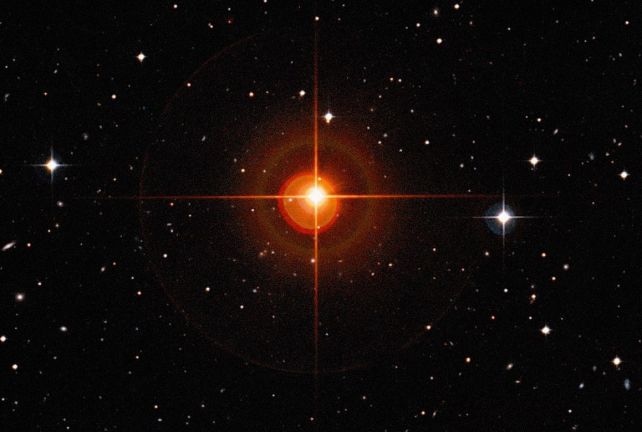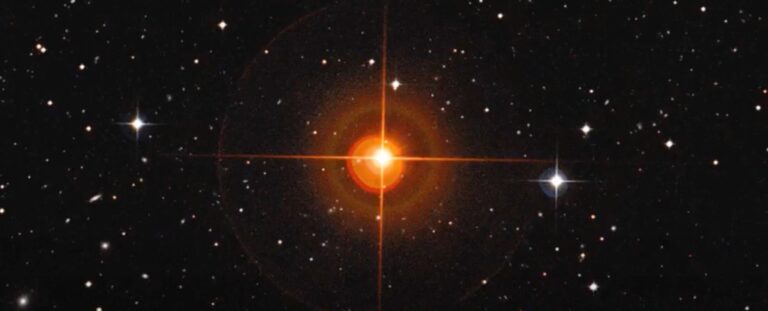Black Hole Parasites Might Devour Stars from Within
Astrophysicist Earl Bellinger from the Max Planck Institute for Astrophysics and Yale University has put forward an intriguing idea regarding dark matter. According to a recent paper, it is possible that minuscule black holes, which originated during the early stages of the universe, could have become embedded within stars similar to our Sun. Over time, these black holes would gradually consume the star from within, transforming matter into more black holes.
Although this concept remains highly speculative, the study delves into the potential impact of such parasitic behavior on stars and explores methods for identifying them in the vast expanse of the Universe.
The researchers state in their paper, “We have discovered that these objects can surprisingly endure for extended periods, with the smallest black holes exerting no influence on stellar evolution, while larger ones gradually consume the star, resulting in a variety of observable effects.”
They further suggest that the distinctive internal structures of stars hosting black holes could potentially be detected through asteroseismology, if indeed these peculiar objects exist.
The Universe contains a variety of black holes, ranging in size. We have observed black holes with masses similar to stars, which are believed to have formed from the collapse of massive stars at the end of their lifespan, as well as through mergers. There are also supermassive black holes, millions to billions of times the mass of the Sun, located at the center of every galaxy. Additionally, there are black holes with masses in between, although they are more difficult to detect, their numbers are increasing.
However, we have yet to discover extremely small black holes, comparable in mass to planets, moons, or asteroids. These objects lack the necessary mass and gravitational force to collapse into a dense black hole.
Nevertheless, there is a theoretical possibility for the formation of tiny black holes. According to Stephen Hawking’s theory developed in the 1970s and further expanded by other scientists, these miniature black holes could have emerged within the first few seconds after the Big Bang. During this time, the Universe was still hot and dense, allowing areas of higher density to collapse into regions of spacetime from which nothing could escape.
The fate of these hypothetical “primordial” black holes, if they indeed existed, remains a mystery. However, they could potentially explain the additional gravitational effects attributed to dark matter in the Universe.
Some scientists speculate that these tiny black holes could have ended up inside neutron stars, residing in their cores and consuming matter like peculiar cosmic parasites.
Bellinger and his colleagues aimed to investigate the possibility of an endoparasitic black hole, not within a deceased stellar remnant like a neutron star, but within a living, fusion-active main-sequence star such as the Sun. Hawking himself proposed the idea that the Sun could harbor a primordial black hole. Other scientists have conducted theoretical analyses and concluded that a primordial black hole would devour a star from within.
Bellinger and his team conducted a comprehensive analysis to determine the effects of primordial black holes on stars ranging from 0.8 to 100 solar masses. They also performed numerical simulations to study the evolution of Sun-like stars with primordial black holes residing in their cores.
The researchers discovered that the smallest black holes would face challenges in their growth. It would require billions of years for these black holes to consume a star completely.
However, a black hole with the mass equivalent to that of a dwarf planet would exhibit a much more voracious behavior. It would begin devouring the core of a Sun-like star, causing the surrounding material to form a disk that emits substantial amounts of light and heat.
Within a billion years, the star would no longer derive its energy from fusion but rather from the accretion disk swirling around the black hole. Interestingly, all the light emitted by this star would be generated by the black hole itself. The researchers have coined the term “Hawking star” to describe this hypothetical type of star.

A Hawking star exhibits similar behavior to a regular star, but there are a few notable distinctions. Like the Sun, it would expand into a red giant as fusion diminishes towards the end of its lifespan. However, its temperature would be lower than what we would typically expect from such a star. Interestingly, we have already discovered abnormally cool red giant stars in our own galaxy, known as red stragglers.
According to the researchers, studying these stars could provide insights into the characteristics of a black hole engine. Black hole accretion is anticipated to generate distinct acoustic patterns within the star, unlike fusion. These patterns could potentially be detected as subtle changes in the star’s brightness on its surface. The exact appearance of these brightness changes remains unknown, and the researchers plan to address this question in a future publication.
The researchers state that this presents an opportunity to either identify such objects or establish limitations on their abundance and capture rate.
Furthermore, future studies will explore the implications for stars in more advanced evolutionary stages, numerical outcomes for stars with varying masses and metallicities, as well as investigations into stellar populations.
The research has been published in The Astrophysical Journal.
This article is republished from sciencealert under a Creative Commons license. Read the original article.
Do not forget to share your opinion with us to provide you with the best posts !




0 Comments